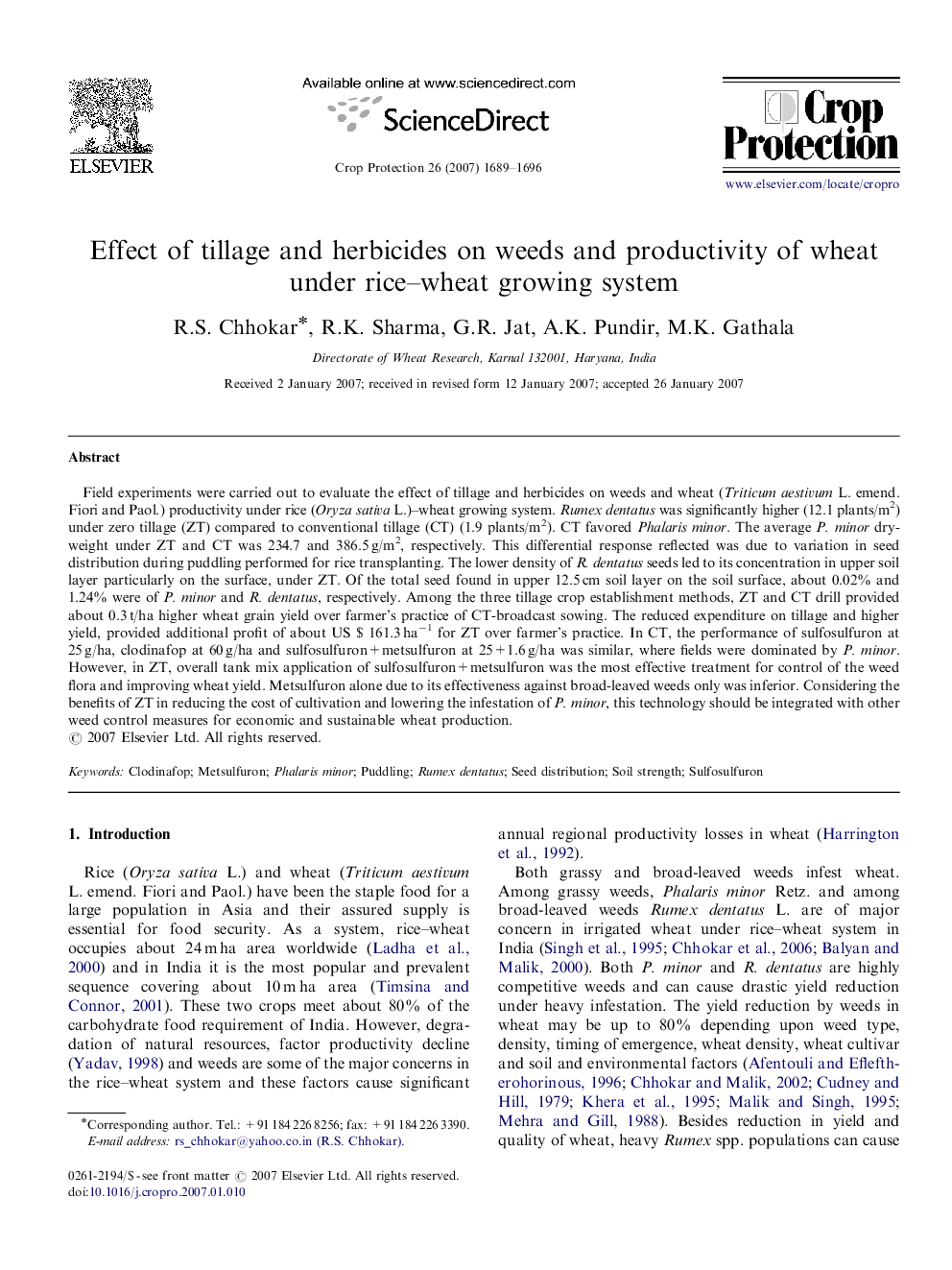| Article ID | Journal | Published Year | Pages | File Type |
|---|---|---|---|---|
| 4507036 | Crop Protection | 2007 | 8 Pages |
Field experiments were carried out to evaluate the effect of tillage and herbicides on weeds and wheat (Triticum aestivum L. emend. Fiori and Paol.) productivity under rice (Oryza sativa L.)–wheat growing system. Rumex dentatus was significantly higher (12.1 plants/m2) under zero tillage (ZT) compared to conventional tillage (CT) (1.9 plants/m2). CT favored Phalaris minor. The average P. minor dry-weight under ZT and CT was 234.7 and 386.5 g/m2, respectively. This differential response reflected was due to variation in seed distribution during puddling performed for rice transplanting. The lower density of R. dentatus seeds led to its concentration in upper soil layer particularly on the surface, under ZT. Of the total seed found in upper 12.5 cm soil layer on the soil surface, about 0.02% and 1.24% were of P. minor and R. dentatus, respectively. Among the three tillage crop establishment methods, ZT and CT drill provided about 0.3 t/ha higher wheat grain yield over farmer's practice of CT-broadcast sowing. The reduced expenditure on tillage and higher yield, provided additional profit of about US $ 161.3 ha−1 for ZT over farmer's practice. In CT, the performance of sulfosulfuron at 25 g/ha, clodinafop at 60 g/ha and sulfosulfuron+metsulfuron at 25+1.6 g/ha was similar, where fields were dominated by P. minor. However, in ZT, overall tank mix application of sulfosulfuron+metsulfuron was the most effective treatment for control of the weed flora and improving wheat yield. Metsulfuron alone due to its effectiveness against broad-leaved weeds only was inferior. Considering the benefits of ZT in reducing the cost of cultivation and lowering the infestation of P. minor, this technology should be integrated with other weed control measures for economic and sustainable wheat production.
